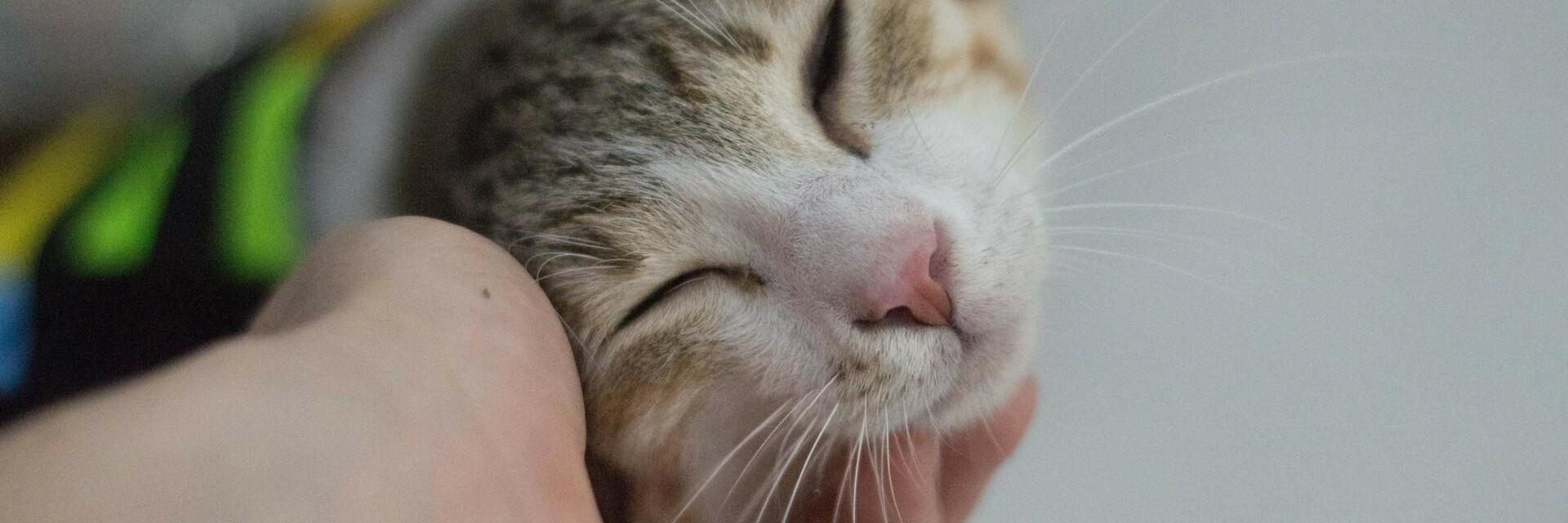
Car Accidents Involving Cats
What to do when a cat is involved in a car accident
Road traffic accidents (RTA) involving cats and other animals are a sad reality. Cats often run across the street without being aware of the deadly danger. Here is FOUR PAWS’ advice for what to do when a cat is struck by a passing car.

1. Keep calm and contact a vet
Try to keep a cool head and look out for someone who can help you. Contact a vet as soon as possible.
2. Secure the accident site
Whether the accident involved you or you are a first responder: secure the accident site according to your country’s guidance (e.g. with a warning triangle). Make sure that you do not put yourself in danger. It is paramount that you keep yourself safe at all times.
3. Make a first assessment
In instances where a cat appears uninjured, yet displays signs of respiratory distress and impaired movement, prompt veterinary consultation is advised. Such indications may suggest underlying conditions such as internal hemorrhaging, cranial trauma, or other significant injuries that may not be readily apparent upon an initial assessment. A cat that is in severe pain or in shock can bite and scratch out of fear. Cat bites and scratches must be treated medically as they can cause infection.
- If the animal appears unconscious and is not responsive to sound or touch, try pinching their skin to see if there is a reaction.
- Check the color of mucous membranes (e.g., gums), are they pink (good), very pale (bad), purplish-blue (bad) or yellow (bad).
- Look for life-threatening conditions, such as severe bleeding, head injuries, broken bones (e.g., spine, pelvis; see point 5) and respiratory and cardiac arrest (see point 6). This information is important if you contact the nearest veterinary practice as the staff will ask you for the details of the accident over the phone.
- Stop the bleeding DO NOT touch any bodily fluids with your bare hands; apply pressure with a clean piece of cloth or gloves if available.
- Broken bones Avoid any unnecessary movement of the cat that would aggravate any existing injuries to the spine and pelvis. If necessary, carefully lift the injured cat by sliding a flat board (wood or cardboard) or a thick towel under its body.
- Difficulty breathing. Apply the ABC rule1 making sure to always prioritize your safety. It's only when one experiences it firsthand that they truly comprehend the severity of an animal bite, particularly if the animal is diseased rather than merely injured.
- A: AIRWAYS: - If you are not sure the cat can breathe, open the mouth and straighten the neck to a normal position. You can clear the nose and mouth with a piece of cloth or gauze, you can also try to take the tongue out and look for obstructions in the throat but avoid putting your fingers inside the mouth unnecessarily.
- B: BREATHING - (Mouth to nose) If the animal still isn’t breathing after freeing up the airways first try to pinch or flick the nose hard a few times and wait for breath. If there is no sign of spontaneous breathing, you may proceed with mouth to nose. Cats have a bite reflex, so hold the muzzle closed with one hand and breath into the nose, using a gauze or cloth as a barrier between their nose and your mouth. If you are not sure you can do any of these things safely, then just try to get the animal to a veterinarian as fast as possible.
- C: CIRCULATION - (Feel for a heartbeat on the inside of the thigh. In case of cardiac arrest, begin CPR) – The animal should lie on its right side. Use two fingers to give compressions on the left thoracic side, give 2 breaths for every 30 compressions. If there is any response at all, stop CPR right away. If the animal is conscious, lift it with the flat surface (e.g., wooden board, cardboard, or a thick towel, and take it to the vet.
4. Drive to the vet
Once you have stabilized the cat, take it to a veterinarian. If the accident occurs at night when veterinary offices are closed, still contact them as most clinics will give an emergency number you can contact for help. If they don’t, go online via a mobile phone and search for the nearest emergency veterinary clinic.
Identification and Registration
If there's an accident involving a cat with a microchip, it enables the identification and contacting of the owner. It's crucial for the owner to ensure that the contact information remains current, as it's their responsibility. Having cats neutered also limits roaming activities, especially in male cats. This in turn reduces the risks of cats crossing roads and being involved in road accidents.
ABC rule reminder

Airways

Breathing

Circulation
If you find a dead cat
Stop and secure the location (e.g. with a warning triangle).
Please refrain from moving the animal's body to the side of the road unless you have a pair of gloves with you, and report the location to the police or your local authority. A dead cat displays no reflexes, has no heartbeat and is not breathing. You can also inquire with local residents to see if they know who the owner of the cat is so they can be informed.
Test your knowledge
Question - of -
What is the first thing to do when a cat is involved in a car accident?
How do you assess if the cat is still breathing?
How do you perform CPR on a cat?
Points reached:
Source
1. Albert Moussafir. Albert Moussafir shares tips for emergency cat health problems. Albert Moussafir shares tips for emergency cat health problems. 2022 [accessed 2024 Apr 23]. https://www.thevetwhetstone.co.uk/article/albert-moussafir-shares-tips-for-emergency-cat-health-problems

